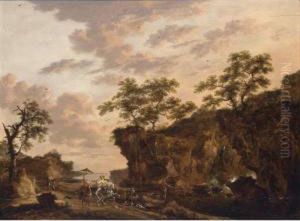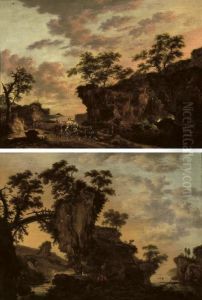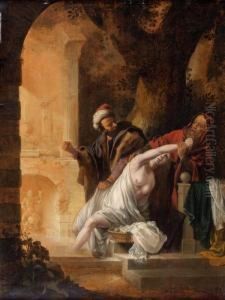Herman Naiwincx Paintings
Herman Naiwincx was a notable Dutch Golden Age painter, recognized for his contributions to the landscape genre of painting. Born in 1623 in Gorinchem (or Gorkum), a town in the Dutch Republic, Naiwincx's early life remains somewhat obscure, but he is believed to have come from a family with artistic inclinations. His work reflects a profound appreciation for nature, capturing the serene and pastoral landscapes of his homeland with a remarkable sensitivity to light and atmosphere.
Naiwincx's career unfolded during a period when landscape painting was undergoing significant evolution in the Netherlands, moving away from the idealized vistas influenced by Italianate preferences to a more realistic and direct representation of the Dutch countryside. He was part of this transformative movement, and his paintings often featured the lush, verdant settings of the Dutch landscape, punctuated with waterways, cottages, and figures engaged in daily activities. His ability to render the changing moods of nature, from the tranquil to the tempestuous, garnered him appreciation among his contemporaries and patrons alike.
Though Naiwincx's travels and influences are not extensively documented, it is known that he spent some time in Germany and the Alpine regions, which is reflected in some of his works that depict mountainous landscapes—a departure from the flat terrains typical of the Netherlands. This suggests that his art was not only rooted in his immediate surroundings but was also informed by his experiences and observations abroad.
Herman Naiwincx's contributions to Dutch landscape painting were significant, yet he remains a somewhat underappreciated figure in the broader history of art. His death in 1670 marked the end of a career that had enriched the Dutch Golden Age of painting with works that continue to captivate viewers with their quiet beauty and atmospheric depth. Despite the scarcity of detailed records about his life, Naiwincx's surviving paintings serve as a testimony to his skill and artistic vision, ensuring his place in the annals of Dutch art history.


